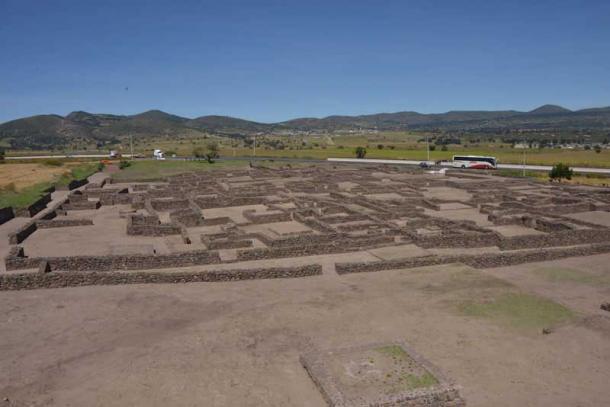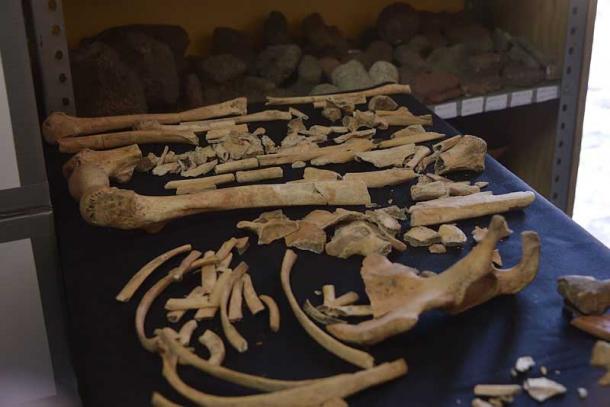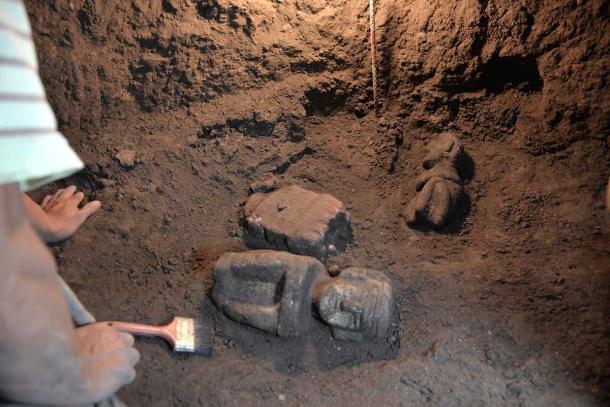
Charred Remains Reveal the Ultra-Violent End of Zultépec-Tecoaque
Archaeologists at the excavation site of Tecoaque near Calpulalpan in Mexico have discovered 24,000 bones relating to the 500-year-old “sacrifice and revenge slaughter” events that brought Zultépec-Tecoaque to a bloody end.
Today Calpulalpan, or Heroic City of Calpulalpan, is the capital of the Homonymous Municipality located to the west of the state of Tlaxcala. The Acolhua people were a Mesoamerican culture who arrived in the Valley of Mexico around the year 1200 AD and they were an important political ally of the ancient Mesoamerica Triple Alliance that was founded in 1428 AD by the Tenochtitlan, Tetzcoco, and Tlacopan. This indigenous power structure came to an end 500 years ago this year, with the Spanish conquest of 1521 AD, and a revenge murder attack that would send shock waves across the known world.
Every year the Acolhua people of Zultépec, which was later renamed to Tecoaque, worshiped the Aztec god of fire Xiuhtecuhtli at Izcalli, the culminating month of the Mesoamerican calendar. However, this tradition happened for the last time 500 years ago this year, in 1521 AD.
In a unique act of resistance to the Spanish, the residents of Zultépec had captured a caravan of people and animals belonging to Spanish conquistador, colonial official, and explorer Pánfilo de Narváez. They then proceeded to slaughter/sacrifice their captives on selected dates on the ritual calendar over eight months. This spawned a punishment from the Spanish that will be remembered as one of history’s most brutal and cold hearted acts of revenge.

The excavations reveal the Spanish revenge on the people of Zultépec-Tecoaque. (Melitón Tapia / INAH)
An Eye for an Eye, Even If We All Go Blind
In 1632 chronicler Bernal Díaz del Castillo wrote Historia verdadera de la conquista de la Nueva España (which translates as “The True History of the Conquest of New Spain”) in which he said that the conquistador Gonzalo de Sandoval was ordered to “destroy and ravage a large town, subject to this city of Tesuico (Texcoco), which borders the terms of the province of Tascaltecal (Tlaxcala).” Sandoval was commanded to destroy the settlement because “natives had killed five men on horseback and forty-five persons who came from the Villa de la Vera Cruz to the city of Temixtitan (Tenochtitlan) […].”
- Archaeological Site in Mexico Reveals Sacrifice and Cannibalization of Spanish Conquistadors
- The Controversial Role of La Malinche in the Fall of the Aztec Empire: Traitor or Hero?
- Will Pope Apologize to Mexico for Church Complicity during Spanish Conquest?
Now, a multidisciplinary team of researchers from the National Institute of Anthropology and History (INAH) have investigated 22 wells and structures on the main road in Calpulalpan. What they discovered stands as testimony to the retaliation carried out by Sandoval, at the bequest of his colonial overlord, Hernán Cortés. The director of the archaeological site, Enrique Martínez Vargas, said in the INAH statement that the retaliation against the Zultépec “had to be undertaken at the beginning of March 1521.” This is why the events are particularly significant now in 2021, a year which marks 500 years since the fall of the capital Tenochca.

The bones discovered at Zultépec-Tecoaque show that women and children were murdered and mutilated. (INAH)
Zultépec-Tecoaque Slaughter the Women and Children First
Professors Enrique Martínez Vargas and Ana María Jarquín Pacheco have spent the last three decades studying the population of Zultépec and they say “it increased after the capture of the caravan, as people from Tenochtitlan arrived to participate in the sacrifices of the captives.” The city was populated by around five thousand inhabitants at the time of the mass-sacrifices.
Fearing reprisals from Gonzalo de Sandoval for their systematic murder and sacrifice of the Spanish captives - the Acolhuas of Zultépec - began walling off the residential areas of the village near the main road and in a panic they stashed their murder victims in the town's 22 wells.
So far the archaeologists have recovered 25,000 pieces of bone, including human bones of sacrificed captives, that had been “modified as trophies” and buried hastily with clay sculptures of pre-Hispanic deities. Perhaps the most eye-clenching aspect of their work was discovered on a stretch of road just outside the village. The two researchers discovered the remains of a group of indigenous females who had been frantically protecting something from the attack of a group of mounted, steal-cladded, gun-firing Spanish soldiers. Beneath the women, the broken remains of a group of children aged between 5 and 9 years old were discovered, providing an answer as to what it was that the women had died protecting.

When they attacked Zultépec-Tecoaque, the Spaniards also burnt temples and decapitated deities. (Melitón Tapia / INAH)
Cultural Exchange at the Tip of a Spear
Like in all wars, battles and conquests, there’s always a tiny space for humanity. Or is there? Archaeologist Martínez Vargas finds it curious that the team have found evidence indicating “coexistence between the Acolhuas of Zultépec and the prisoners of the caravan,” even going so far as to suggest the captives “were their guests.” This conclusion was derived from a series of modifications that were made to the village dwellings to host the foreign prisoners, for example, walls were built with European construction styles: suggesting to Martínez Vargas that a “cultural exchange” had occurred.
The term “cultural exchange” conjures up images of witty Spanish prisoners winning over their tribal captors and teaching them European traditions. However, the captives were being dragged out one at a time and being skinned alive, over several days, and even met fates much, much worse. And while some of the captives might have been building walls they were all hearing the chilling death screams of their friends and families cutting through the forests as their necks were slowly sliced in the name of Xiuhtecuhtli. Any “cultural exchange,” therefore, most probably, happened at the tip of a spear.
Top image: So far, 22 wells have been excavated at Zultépec-Tecoaque, yielding plentiful evidence of violence and slaughter 500 years ago. Source: Melitón Tapia / INAH
By Ashley Cowie















